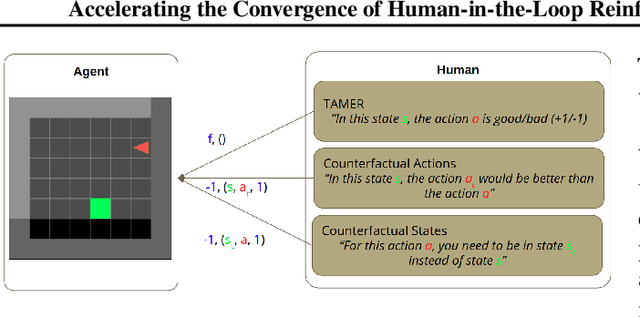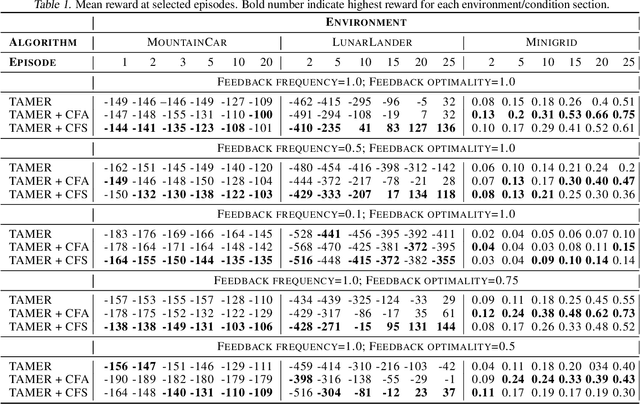Jakob Karalus
Tell my why: Training preferences-based RL with human preferences and step-level explanations
May 23, 2024Abstract:Human-in-the-loop reinforcement learning (HRL) allows the training of agents through various interfaces, even for non-expert humans. Recently, preference-based methods (PBRL), where the human has to give his preference over two trajectories, increased in popularity since they allow training in domains where more direct feedback is hard to formulate. However, the current PBRL methods have limitations and do not provide humans with an expressive interface for giving feedback. With this work, we propose a new preference-based learning method that provides humans with a more expressive interface to provide their preference over trajectories and a factual explanation (or annotation of why they have this preference). These explanations allow the human to explain what parts of the trajectory are most relevant for the preference. We allow the expression of the explanations over individual trajectory steps. We evaluate our method in various simulations using a simulated human oracle (with realistic restrictions), and our results show that our extended feedback can improve the speed of learning. Code & data: github.com/under-rewiev
Accelerating the Convergence of Human-in-the-Loop Reinforcement Learning with Counterfactual Explanations
Aug 03, 2021


Abstract:The capability to interactively learn from human feedback would enable robots in new social settings. For example, novice users could train service robots in new tasks naturally and interactively. Human-in-the-loop Reinforcement Learning (HRL) addresses this issue by combining human feedback and reinforcement learning (RL) techniques. State-of-the-art interactive learning techniques suffer from slow convergence, thus leading to a frustrating experience for the human. This work approaches this problem by extending the existing TAMER Framework with the possibility to enhance human feedback with two different types of counterfactual explanations. We demonstrate our extensions' success in improving the convergence, especially in the crucial early phases of the training.
 Add to Chrome
Add to Chrome Add to Firefox
Add to Firefox Add to Edge
Add to Edge